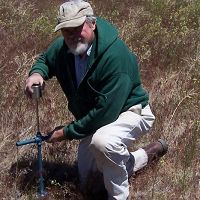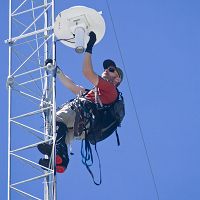Hart et al., 2015
The Median Isn’t the Message: Elucidating Nutrient Hot spots and Hot Moments in a Sierra Nevada Forest Soil.
Hart, S., *Barnes, M., Johnson, D., Meadows, M. (2015)
B22D Microbial Controls of Biogeochemical Cycling II, presented at 2015 Fall Meeting, AGU, San Francisco, CA, 14-18 Dec.
-
Sierra, INVESTIGATOR
-
Sierra, GRAD STUDENT
-
Sierra, INVESTIGATOR
-
Sierra, STAFF
Abstract
Most biogeochemical studies in forests have concentrated on nutrient pools and transformations occurring at relatively large spatial scales (i.e., stand or small catchment), over monthly or annual time scales. Many of these studies have also focused on the average or medial values observed across the spatial or temporal scale studied, discounting outliers. However, extremely high values found consistently (hot spot) or infrequently (hot moment) at a given soil microsite may be critical for nutrient acquisition by organisms and nutrient retention by terrestrial ecosystems. We have been evaluating soil nutrient hot-spot and hot-moment phenomena vertically (to a 60-cm depth) and horizontally (2-m sampling interval within a 6 m x 6 m grid) in two areas within a mixed-conifer, Sierran forest experiencing a Mediterranean-type climate. Nutrient fluxes in space and time were measured using ion exchange resin capsules placed at various depths and collected at two times (first significant precipitation in fall and post-snowmelt in spring) per year. Our previous work over a single year showed that fluxes of Ca2+ and Mg2+ in mineral soil were substantially greater in the spring (post-snowmelt) than in the fall, suggesting that soil water was a major factor in controlling these nutrient fluxes. The opposite pattern was found for NH4+ and Na+, where greater fluxes occurred following the first precipitation event in fall. Here, we report new data over two additional years at these same sites that allow us to better delineate between nutrient hot spots and hot moments. Overall, our results suggest that microbial-mediated nutrients (e.g., NH4+, NO3-, and PO43-) occur frequently as both hot spots and hot moments within soil, while those that are more abiotically controlled (e.g., Ca2+, Mg2+, and Na+) occur predominately as hot spots. Further elucidation of the mechanisms responsible for nutrient hot spot-hot moment phenomena within soil should be invaluable for improving the predictive capacity of biogeochemical models and for scaling these models across space and time.
Citation
Hart, S., *Barnes, M., Johnson, D., Meadows, M. (2015): The Median Isn’t the Message: Elucidating Nutrient Hot spots and Hot Moments in a Sierra Nevada Forest Soil. B22D Microbial Controls of Biogeochemical Cycling II, presented at 2015 Fall Meeting, AGU, San Francisco, CA, 14-18 Dec..
Explore Further




